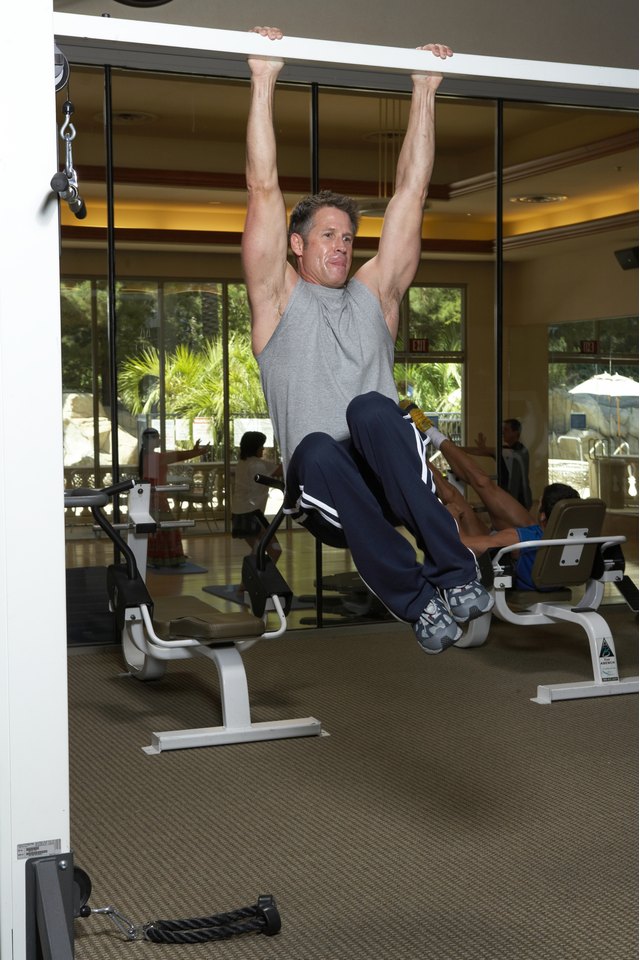Can a Chin-Up Hurt the Back?

Body-weight exercises are generally safe to perform because you’re limited in how much impact the exercise has on the muscles you’re targeting. For example, it’s difficult to seriously strain your pectorals doing pushups. But certain body-weight exercises may strain or injure target muscles. The standard chin-up is no exception, if not done properly, and can hurt the back in rare circumstances.
Muscles Worked
The primary target of the standard chin-up is the latissimus dorsi, which is the large muscle group that predominantly comprises the back. The muscle stretches laterally from your spine to the sides of your upper back in each direction. The exercise also works the deltoids, trapezius, biceps, and numerous stabilizers throughout the upper body. As the main back muscle, the lats provide most of the power for each portion of the chin-up. During the lift phase, the lats carry the stress of your body weight up against the pull of gravity. During the control phase, your lats pull your body weight against gravity as you slowly lower yourself back to starting position.
Proper Form
The form of the basic chin-up begins with an overhand grip on the bar, with your hands wider than your shoulders. Pull your body up with your back, arms and shoulders bending at the elbows; rotate your shoulders as your come up. Keep your body straight and avoid contracting your abdominals. Continue upward until your chin is above the bar, then control your descent back to the original position.
Possible Causes of Injury
Improper form may cause injury and pain in a number of ways while performing chin-ups. For example, if your hands are too wide, your lats and trapezius muscles may be forced to compensate for the strength that your biceps can’t provide. Also, swinging your lower body forward, backward or side to side to generate momentum will engage lower back muscles and can cause strain or injury. Chin-ups can also cause pain or injury to the back when you overtrain in some fashion. Muscle soreness is common, but don't confuse that with pain from overtraining or injury. If you attempt to do too many reps or sets of chin-ups, or if you do them on consecutive days, you can cause injury from overtraining.
Variations
Certain variations can help make chin-ups easier for beginners or those worried about injury. Adjust your grip so your hands are at shoulder width or a bit narrower. This will take some of your body weight off of your lats and place it on the biceps. Also, try reversing the grip. Instead of using an overhand chin-up grip, use an underhand grip, which will make the move a pullup. This will also help shift some of the stress away from your lats, reducing the risk of pain and injury.
References
Writer Bio
Bobby R. Goldsmith is a writer and editor with over 12 years of experience in journalism, marketing and academics. His work has been published by the Santa Fe Writers Project, "DASH Literary Journal," the "Inland Valley Daily Bulletin" and WiseGEEK.
